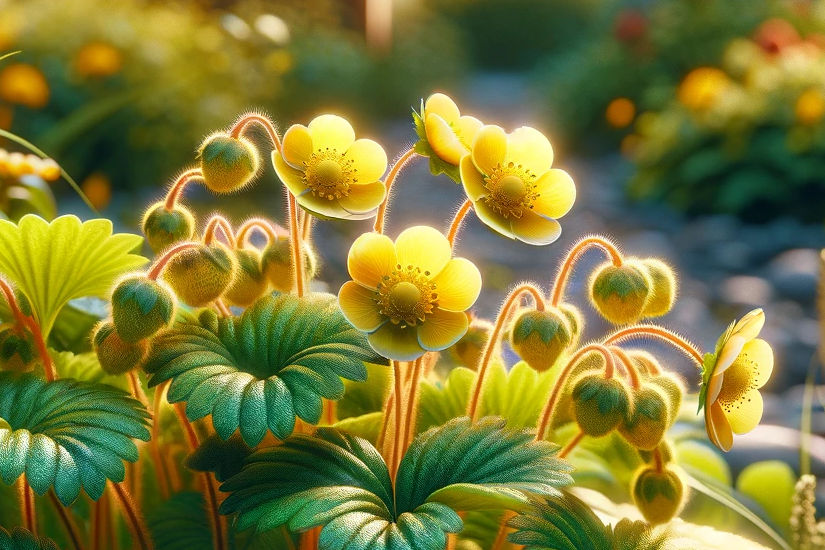Three-leaved woodland stonecrop

What is the three-leaved woodland stonecrop?
The trifoliate woodland stonecrop belongs to the rose family (Rosaceae) and is a perennial, ground-covering plant known for its robust and low-maintenance nature. With its glossy, green leaves that stand together in groups of three and its golden yellow flowers that appear in spring, it provides an attractive ground cover for shady to semi-shady areas in the garden.
Advantages of the three-leaved woodland stonecrop near dogs
Robust and safe
One of the biggest advantages of the three-leaved woodland stonecrop is its robustness and safety for pets. Unlike many other plants, it is not toxic to dogs, making it an excellent choice for households with curious four-legged friends.
Easy to care for
The low maintenance of the three-leaved woodland stonecrop also means fewer worries for dog owners. This plant requires little attention once established and can thrive well in a garden that is also a home for active dogs. It is resistant to many pests and diseases and only requires occasional watering and removal of faded blooms to maintain its attractiveness.
Disadvantages: Considerations for the dog owner
Allergic potential
Although trifoliate woodland stonecrop is non-toxic, there is the potential for allergic reactions with any plant. Some dogs may be sensitive to pollen or plant sap, which can lead to skin irritation or other allergic symptoms. It's important to monitor your dog's behavior and health and consult a veterinarian if there are any signs of allergy.
Hide and seek
The dense ground cover provided by the trifoliate woodland stonecrop could also provide a hiding place for parasites such as ticks, which pose a threat to your dog's health. Regular checks and preventative measures against parasites are necessary to keep your dog healthy.
Dealing with the three-leaved woodland stonecrop: a safe garden for your dog
To enjoy the benefits of trifoliate stonecrop without endangering your dog's health, you should follow these tips:
- Choose locations for planting that are less accessible to your dog if he is known to be prone to allergic reactions.
- Monitor your dog for signs of an allergic reaction and consult a vet if necessary.
- Keep the garden area clean and free of parasites to protect your dog's health.
The three-leaved woodland stonecrop is undoubtedly an attractive and low-maintenance addition to any garden, with the added benefit of being safe for dogs. However, as with any plant in a household with pets, it is important to exercise caution and keep an eye on the health and welfare of your four-legged friend. With the right precautions, trifoliate woodland stonecrop can be a wonderful addition to your garden, fulfilling both aesthetic and functional needs without compromising your dog's safety.
If you notice any signs of hypersensitivity or poisoning in your dog, you should see your vet immediately. We are not a substitute for a vet, but we try to be as accurate as possible. Every dog reacts differently and we recommend you get a second opinion or consult your vet if in doubt.
Stay healthy and take good care of your four-legged friend!😊
Similar to Three-leaved woodland stonecrop
The golden strawberry, or physalis, belongs to the nightshade family and includes various species, some of which are edible, such as Physalis peruviana (cape gooseberry) and Physalis philadelphica...
Sand thyme, also known as quendel, is a perennial herbaceous plant from the labiate family. Sand thyme is characterized by its small, fragrant leaves and purple to pink flowers, which dominate the...
The small periwinkle(Vinca minor) is an evergreen perennial that belongs to the dogbane family(Apocynaceae). It is characterized by its ability to grow quickly and cover the ground with a dense...
Japanese ysander, Pachysandra terminalis, is an evergreen, ground-covering perennial originally from Japan and China. This plant is characterized by its ability to form dense carpets that cover the...



